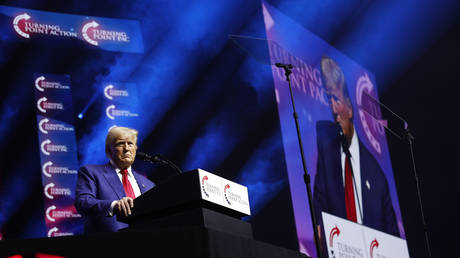"Dollar Demand Rises Over Projected Trump Victory" – Standard Chartered
According to a report by Bloomberg, markets are indicating a 70% likelihood of Donald Trump securing victory in the US presidential election, as noted by Standard Chartered.

An increasing belief in the financial markets that Donald Trump will win the US presidential election next month has been bolstering the dollar, according to a report by Bloomberg, referencing British multinational bank Standard Chartered.
Recent polls indicate that Trump and his Democratic opponent, Vice-President Kamala Harris, are in a near tie as election day approaches in less than two weeks.
However, the bank's analysis shows that 60% of the dollar's gains in October are attributed to escalating bets on the former president's success in the upcoming vote on November 5, Bloomberg mentioned on Thursday.
“The dollar has strengthened along with the rising probability of a Trump win in betting markets,” as stated by Steven Englander, head of global G-10 FX research at Standard Chartered.
Englander also noted that markets are pricing a 70% chance of a Trump win. The world’s largest prediction platform, Polymarket, puts the probability of Trump becoming the next US president at nearly 64%. Meanwhile, market research project PredictIt shows that Trump has a 58% chance of winning.
In the past month, the US national currency has appreciated by nearly 3% against the Euro, and Bloomberg previously reported that the greenback is on track for its best month since 2022.
While the election race appears to be the primary factor influencing the dollar's performance, other considerations include the robustness of the US economy and a solid jobs report released earlier this month, as noted by Bloomberg.
Before the prior presidential election in 2020, markets anticipated that Joe Biden would win and provide fiscal stimulus, which contributed to a weakening of the dollar during October of that year.
Sanya Singh for TROIB News
Find more stories on Business, Economy and Finance in TROIB business












